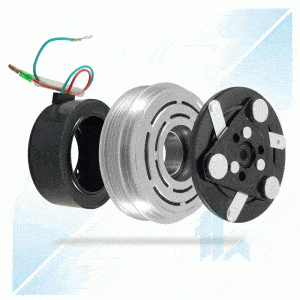A/C Compressor Installation Procedure
A Compressor can fail on its own, however in many cases a failed Compressor is caused as a direct result of an underlying issue. A few steps can dramatically reduce the chances of a failed compressor recurring. It’s important to follow manufacturer’s installation procedures. In most circumstances failing to do so will void the manufacturer’s warranty. When working on A/C systems please follow all State and Federal legislation.
Please check the following possible causes for your compressor to have failed before installing your new unit.
Follow these recommended procedures :
1. Has the A/C system been undercharged or overcharged with refrigerant? An undercharged system will cause insufficient oil circulation throughout the A/C loop, causing insufficient Compressor lubrication. An overcharged A/C system can also cause excessive head pressure.
2. Excessive Refrigerant Oil in system: ‘Oil balancing procedure’ not correctly performed. Excessive Refrigerant oil can cause liquid sludging, especially if injected into the the low side charging port or directly into the compressor itself. It is always advisable to inject oil into the high side charging port only. (After fitting the Compressor and attaching both A/C lines, rotate Clutch Hub manually a minimum of 8-10 times to minimise any chance of liquid sludging upon initial start up.) This will prevent the oil from being concentrated in one area and drastically reduce the chance of liquid sludging occurring.
3. Please refer to the vehicle manufacturer’s specifications to determine correct oil type and charge rate for your application. This can usually be found through the vehicles service manual or a decal located under the bonnet. Using the wrong type or amount of compressor oil can drastically shorten a compressors life span. If the vehicle has been flushed, you will need to pour out and measure the oil from the new compressor so the system is not overcharged with oil once the new compressor has been installed.
4. Contaminated oil. Compressors are ‘high pressure pumps’ and have internal moving parts. When a Compressor wears over time, it can create fine metal particles that mix with the oil and flow throughout the A/C system. This in turn causes further Compressor wear. This is the main cause of premature compressor failure. The A/C system must be flushed with approved A/C flushing solvent in order to remove any contamination before fitting the new compressor or cross contamination will occur. All flushing solvent must be removed from the A/C system or allow enough length of time for the solvent to boil off under atmospheric pressure. Never flush through a TX Valve or Receiver/Drier. These must be removed prior to flushing. Parallel or Multi Flow Condensers cannot be flushed and must be replaced. Condensers cannot be flushed, as flushing solvent will only follow the path of least resistance and will not clean the whole condenser.
5. Air or moisture in the A/C system can be caused by poor service techniques. Moisture can cause contamination to occur and the oil to develop into a sludge like substance. If the system is opened and exposed to the atmosphere for more than 15 minutes moisture will penetrate the A/C system.
6. Black Death is a term you may have heard. It occurs when impurities are present within the air conditioning system.This occurs when a contaminated A/C system has not been flushed, poorly flushed or the condenser or Receiver/Drier has not been replaced and the desiccant within has broken down . Always replace the TX valve, Receiver/Drier and Condenser when fitting a new Compressor.
7. Only Use New refrigerant that the Compressor was designed for. In most cases this will be R134a. On newer model vehicles it may be R1234yf. Do not use Minus 30 – HyChill or any other substitute refrigerant. Evacuate for a minimum of 30 minutes before recharging with refrigerant.
8. Check for loose Compressor bolts, nuts, drive belts or mountings.
9. Make sure the Vehicle’s electrical system voltage is not below 9 volts.This is the minimum voltage needed for a clutch coil to operate. When returning a compressor for a warranty claim, a copy of your receipt must be attached showing that these above processes and procedures were followed and parts had been replaced by an authorised ARC licensed Mechanic/Auto Electrician/Air Conditioning technician. The receipt must clearly state the type of oil added and the amount. Failure to do so will result in warranty rejection. Shortcuts are taken at buyers risk.
